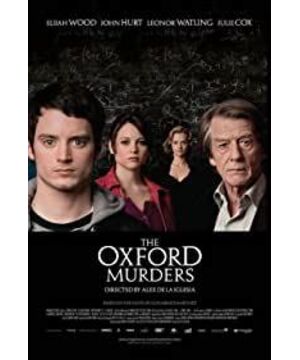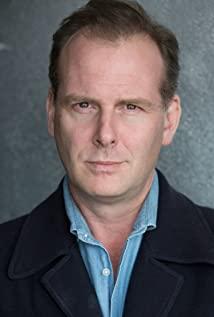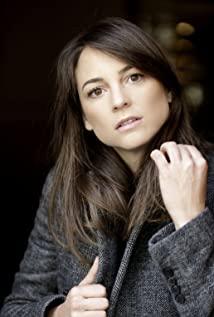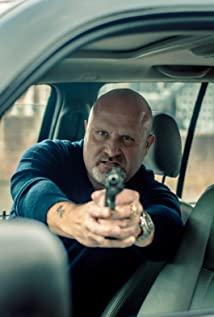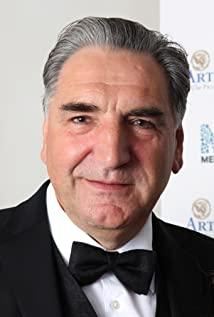Compared with montage, long shots are better at expressing the development of the plot objectively. Even if the cold-eyed bystander incorporates the director’s hidden emotions, it is an expressive behavior of the overall style, a complete motive revealing of the normal actions of things. Without editing, the long shot emphasizes the authenticity of life and depreciates the fictionality of the plot. It expresses the diversity of meanings of things through instantaneity and randomness without any explanation, allowing the audience to think and choose for themselves.
The long-shot, known for its advocacy of authenticity and integrity, echoed the realist films that Bazin admired when the early film theory was born. Through rough textures, it avoided strictly limiting the perceptual behavior of the audience, and truly recounted the objective world. The long shot at this time is not a picture, not an image, but a reality.
With the development of the film to this day, the long shot has not only played the role of a realistic asymptote, but has pursued the rendering and depiction of a plot and emotion through the precise and rigorous empathetic setting and scene scheduling of the director and camera. , rather than the stereotyped reproduction and visualization of reality. On the one hand, it promotes the plot development of the story with real integrity, and on the other hand, it uses the polysemy and ambiguity of the picture to enhance the audience's deep emotional experience and atmosphere rendering. The roles of these two aspects are generally realized by two means - a long shot of motion and a long shot of fixed camera.
Due to its slow and lyrical rhythm, the fixed camera is mostly used to highlight the environment and the emotions of the characters. It is a hidden and turbulent "static braking". The fixed camera of Hou Hsiao-hsien's "City of Sadness" when Zhong Qing and his wife heard the news of their brother's death. A long shot, showing grief in forbearance. The long black screen fixed shot at the beginning of Kubrick's "2001 A Space Odyssey" shows the original chaotic form of human beings. Emotional rendering, as a hidden lyricism, is used in many mature literary and artistic films. This article mainly discusses the moving long shots in "The Oxford Mystery Case", so I will not explain too much about the fixed camera long shots.
In many Hollywood movies or mature art films, sports long shots are often used at the beginning of the story or in the middle of the development of the plot. It promotes the development of the plot through implicit but objective scene scheduling and introduces the background of the story. Directed by Orson Welles and photographed by Russell McGrady, "Beautiful Woman" uses a highly complex long shot at the beginning of the film, using all the techniques at the time to achieve the effect of traversing, elevating, and following shooting, which is perfect The background of the chaotic and dirty story under the border between the United States and Mexico is introduced in the overhead, flat and close-up shots. The grenade in the close-up at the beginning of the film is placed in the car under the long shot, and there is a car in every second under the long shot. The danger of an explosion, which is so touching, can only be done with a long shot. Similar films that introduce characters and story backgrounds through dialogue, movement, and movement of the protagonist in the title film include "Snake Eye", "Goodfellas" and other films. Spatial scheduling makes the long shot a very natural finishing touch, without deliberate exposure, and promotes the development of the plot between the antelopes hanging horns. When it comes to plot development, the plot development of crime and suspense films is even more important, and a little hint of action may be the key to the final answer. The best carrier of this implicit aesthetic concept is of course the long shot. In the dexterous and clever scene character scheduling of the long shot, there are hidden clues and possibilities of the case. The long shot from 00:19:36 to 00:22:07 at the opening of "The Oxford Mystery" is a "long shot" feast that connects the accidental and the inevitable between the characters. Why put the quotation marks, because this is a pseudo-long shot, and after careful analysis, you can still see the traces of editing. But the director made it into a form of growth shot precisely because he took a fancy to the function of the long shot of "narrating but not doing":
the hidden tears shed by Beth, the daughter of the deceased; the book bought by the bus driver at Blackwell Bookstore; the impatient nurse Called a taxi to leave; classmate Martin hurriedly avoided after encountering professor sheldom; professor sheldom hurriedly threw the strange note into the trash can; Martin, who rushed back to the crime scene angrily to pack up and go home. The 3-minute long shot connects every criminal suspect in an orderly manner. The director did not name the characters involved by accident or necessity, but gave the audience the decision to solve the case. The slow rhythm, the continuity of time and space, and the recording function of the camera body, the audience is full of expectations, hoping to verify whether they have guessed the truth in the subsequent plot.
Whether the regression is a major premise for long takes, I think this is a pseudo-long take that is stitched together by at least six shots: the
first shot 00:19:35—00:19:54
The end of the pan shot in the Sheldonian Theatre appears Beth hides cryptic tears, then follows a performer straight out of the Sheldonian Theatre, before the camera pushes into the performer's back and moves away.
The hidden editing formed by the black back was used in Hitchcock's "Lifeline" in the early days, and 4 of the 5 hidden editing in the whole article were completed by the "back editing". Therefore, it is easy to see that the director made a cut here.
I happened to be going to Oxford recently. This long shot was mostly done on Broad Street, so I was on Broad Street and found out that the Blackwell Bookstore is not directly across from the Sheldonian Theatre, and if the camera was pushed by the performer's back directly to the bus driver, there was no Editing, then the location change of the bus driver, according to the movie screen, is from the Sheldonian Theatre gate to the Blackwell Bookstore opposite, but on-the-spot inspection is easy to find that there is no Blackwell Bookstore, Museum of the History of Science directly opposite the Sheldonian Theatre. It's really facing the Blackwell Bookstore. So I guess, the second shot starts with the bus driver connecting the backs of the performers at the entrance of the Museum of the History of Science.
The second shot 00:19:55—00:20:21
The bus driver walked out of the inner courtyard of the Museum of the History of Science and went straight to the door of the Blackwell Bookstore. Audiences may ask why the director did not directly arrange the bus driver in the inner courtyard of the Sheldonian Theatre, but arranged to start his position in the inner courtyard of the Museum of the History of Scince. I think the long shot is relatively objective and documentary, but it is still photography. Selective processing of scenes as the teacher or director prefers. The Museum of the History of Scince is facing the Blackwell Bookstore. The straight line in the same time is easier to show the clues in a simple and clear way. If you go from the inner courtyard of the Sheldonian Theatre to the Blackwell Bookstore, the curved distance of the characters is doubled, delaying the delay. Shooting rhythm is not conducive to expressing condensed hints in limited time and space. This is from an overall point of view. From a technical point of view, the gate of the Sheldonian Theatre has steps, and the camera is prone to unbalanced shaking of the picture when walking up the stairs with the camera. The gate of the Museum of the History of Scince without steps Obviously more suitable for camera shooting.
The third shot 00:20:22—00:21:02 The
color of the bus driver walking from outside the Blackwell Bookstore to the store has changed significantly, from sunlight to the color temperature of incandescent lamps, and the color of the bus driver's coat from bright to dark. This is good evidence that in the bookstore, a new shot has begun. Some netizens said that this is not the reason, they think "the camera is not like the human eye can switch quickly and seamlessly, the camera needs a process of readjusting the white balance and sensitivity, so you will feel a flash when you are watching, but the actual It's not a separate edit." I don't think this constitutes a reason, because if this is caused by the camera readjustment process, then when Martin walks from the bookstore to the outside of the bookstore, the white balance needs to be re-adjusted. Why is the picture at this time? But no color change?
The third shot followed the front and back of the bus driver, Martin, and Professor Sheldom. It is the scene with the most implicated characters, but looking at the whole scene, it is smooth and natural, and the three characters are neatly connected together by accident and dexterity, which shows the skills of the director and cameraman. The inevitability of the contingency, the contingency of the inevitability also just responds to the remarks made by Professor Sheldom at the launch of the new book in the film, "There is no way of finding a single absolute truth, an irrefutable argument that might help to answer the questions. of mankind. Can we know the truth? "The truth under the long shot is ambiguous and ambiguous, and the objective presentation of the truth may lead to countless truths, because it does not limit, and it is not stated. So, this is the advantage of using long shots in suspense and crime films.
The fourth shot 00:21:03—00:21:20 After
throwing the note into the trash can outside the bookstore, the camera focuses on the professor’s walking feet. This is another technique similar to “back editing”. The panorama is replaced by a close-up, which is most likely to confuse the audience's vision, and this is also an excellent time to switch scenes and shots. When I was wandering around Oxford, from the Blackwell Bookstore to The Bridge of Sighs where Martin met Professor Sheldom, the real geographic distance was not a 1-second moment in the film. Walk east for 1 minute from Broad Street where Blackwell Bookstore is located, then turn east towards Catte Street at the intersection to see The Bridge of Sighs. So, Professor Sheldom's feet became "true lies" here again.
The fifth shot 00:21:21—00:21:36
It's still a follow-up shot, but this time it's a follow-up shot of Martin riding a bicycle. No need for me to inspire, yes, this is the "back clip" technique again, only this time the "back" becomes a "blue truck", when Martin rides his bike past the blue truck, the blue truck acts as an obstacle It has a good function of "blinding the eye". The story scene is switched from Catte Street to the residential house where the crime scene is located. After walking on the spot, I can say responsibly that there are no residential houses near Catte Street where The Bridge of Sighs is located, and Martin is riding a bicycle. The design of turning around the blue truck is for the purpose of changing the mirror.
The sixth shot, 00:21:37—00:22:07
Martin parked his bicycle and passed by a big tree. For a moment, his figure was blocked by the big tree, and the big tree played the role of an invisible editing point. As for why we need to edit here, we will talk about it later.
The camera followed Martin as he walked towards the residence, and then abandoned Martin as the follower, forming a self-contained perspective, flying from the flat ground to the air, straight to the window of the crime scene, entering the crime scene through the window, and scanning the interior of the house. After that, the picture finally freezes on the face of the deceased. At this point, this gorgeous pseudo-long shot finally came to an end.
Now let's talk about why the director edited when Martin was passing by the big tree. The audience may think that the editing is unnecessary. In this pseudo-long shot, the editing is mostly because of the geographical length obstacle and can only be cut. But there's obviously no geographic length issue here, there's a technical issue, and the editing here is for technology. To follow Martin rides to a stop, maybe all you need is a track and a Steadicam, but to fly from the ground to the air you have to use a big guy like a boom. Editing at the big tree, the author thinks it is a hint of changing equipment, flying from the ground to the sky, if you keep using the track, it is impossible to achieve, if you keep using the boom, it will be superfluous to kill chickens. Therefore, it is better to use the track for the simple and the boom for the difficult. And this switch between the simple and the difficult is the clipping point of the big tree.
Attached: "Oxford mystery case" 00: 19: 35--00: 22:07 Clip point summary table
No. starting point in the form of brief
1 19'54" Hidden Cut performer walks straight out of the Sheldonian Theatre, camera follows and moves away.
2 20'21" Hidden Cut bus driver walks into Blackwell Bookstore from off the street. The camera follows his back and moves away.
3 21'02" Hidden Clip Professor throws the note in the trash and the camera pushes towards the Professor's feet and moves towards the corner turn.
4 21'20" Hidden Clip bikes around the blue truck, the camera pushes towards the truck Move to the next screen.
5 21'36" Hidden Clip Martin is blocked by a tree, the camera is pushed towards the tree and moves into a residential area.
---------------------- After
watching the attraction , I found that this thing I wrote half a year ago was so silly, and most of the current movies, even long shots, are made in post-production. I really thought about it a lot at that time.
View more about The Oxford Murders reviews


